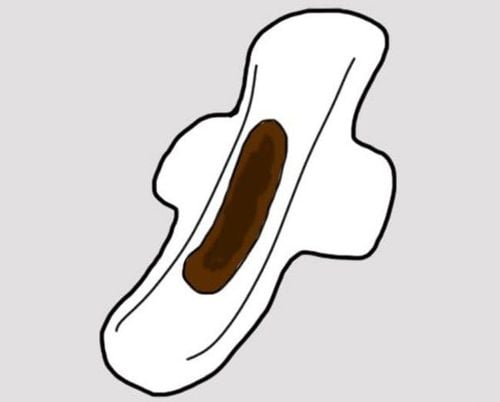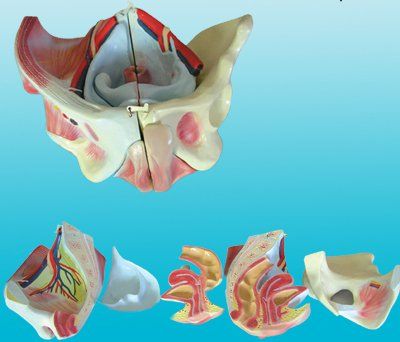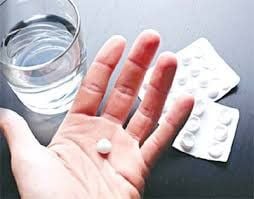This is an automatically translated article.
This article is expertly consulted by a Doctor Urologist - Department of General Surgery & Anesthesia - Vinmec Hai Phong International General Hospital.
Bladder prolapse is caused by the lower part of the bladder retracting through the opening of the external genitalia, pushing the anterior wall of the vagina out of the vulva. This phenomenon causes a feeling of heaviness, pressing against the vagina or also followed by urinary tract disorders, inability to retain urine when exertion.
1. Causes of bladder prolapse
Bladder prolapse is a common disease in women after childbirth, especially women who have had many pregnancies, difficulty giving birth, or giving birth vaginally. Women with bladder prolapse face many difficulties in daily living.
Bladder prolapse occurs when the supporting tissue between the bladder and the vaginal wall weakens and stretches, causing the bladder to protrude into the vagina. Tension in the muscles that support the pelvis can lead to bladder prolapse. It often occurs during childbirth, with chronic constipation, and a violent or heavy cough. Bladder prolapse also tends to cause problems after menopause as estrogen levels drop.
Bladder prolapse can be caused by some of the following reasons:
Weak muscle group that supports the organs in the pelvis. Multiple labors and births Hysterectomy Vigorous physical activity including heavy lifting Aging and decreased estrogen Age, especially for women who often have to do heavy work. Being overweight or obese can also lead to bladder prolapse because excess weight puts extra pressure on the pelvic floor muscle groups.

2. Treatment
Treatment depends on the severity of the disease regardless of the associated condition (eg uterine prolapse).
Mild cases or no obvious symptoms usually do not need treatment. You can choose to wait and watch, see your doctor from time to time to see if your condition gets worse, and adopt self-care measures like doing pelvic floor strengthening exercises.
2.1.Kegel exercise This exercise is done by stretching the pelvic floor muscles (like when you stop urinating), holding for a certain amount of time and then releasing it completely. You can regularly work out to strengthen your muscles, as this exercise requires no special equipment and can be done anywhere (including waiting in line, sitting at your desk, or relaxing). on a cushion to stop the flow of urine while urinating. Squeeze for about 5 seconds, then relax for about five seconds. Gradually increase the time to 10 seconds at a time. The goal is to do 3-4 sets of 10 exercises each. 2.2 Using the vaginal lift ring This type of ring is small in size, made of plastic or silicone material, and is inserted inside the vagina to keep the bladder (and other parts of the body in place) in place. Some types are designed for you to insert yourself into your vagina, others need to be placed by a healthcare professional.Vaginal lifts come in many shapes and sizes so your doctor can choose the best ring for your condition. h multiply.
Vaginal lifts can cause discomfort, and some women experience the ring falling out. In addition, they can cause ulcers (if not sized properly) and cause vaginal infections (if not removed and cleaned monthly). You should use an estrogen cream to avoid damaging the vaginal wall.
Despite some limitations, a vaginal lift is an effective alternative, especially if you want to delay or are unable to have surgery.
3.3 Try estrogen replacement therapy Declining estrogen levels often weaken vaginal muscles, so your doctor may recommend estrogen therapy. Your doctor may prescribe estrogen in the form of a pill, vaginal cream, or vaginal ring to strengthen weakened pelvic floor muscles.
Estrogen therapy poses some risks. Women with certain cancers should not use estrogen and you should discuss the potential risks and benefits of this method with your doctor right away. In general, topical estrogen treatments are generally less risky than oral systemic estrogen treatments.
3.4 Surgery If symptoms of prolapse become noticeable and bothersome, you may need surgery.
The surgery is performed vaginally, lifting the prolapsed bladder back to its original position, removing excess tissue, and tightening the muscles and ligaments of the pelvic floor. The doctor uses a special type of tissue graft to strengthen the vaginal tissues and provide support if the vaginal tissues are thin. If you have uterine prolapse associated with bladder prolapse, your doctor may recommend a hysterectomy in addition to repairing damaged pelvic floor muscles, ligaments, and other tissues.
If you are planning to become pregnant, your doctor will advise you to delay surgery until your baby is born. Using an IUD helps relieve symptoms while you wait for your due date. The benefits of surgery can last for many years, but some of the risks come back, which means you may also have to have another surgery at some point.
Now with the advancement of medicine, along with the regular updating of advanced treatment methods, at Vinmec International General Hospital, the following method has been applied: Laparoscopic surgery to place synthetic grafts to raise the uterus. Bow and bladder are fixed to the protruding muzzle. This method has the greatest advantage that is almost no recurrence, still preserves the uterus, and resolves accompanying urinary incontinence symptoms.
3. Prevention

Do not lay too early, leave too much, lay thick. To give birth in a place with safe delivery conditions and to deliver birth with proper technique. Labor should not be too long, and labor should not be pushed too long. Obstetric procedures must be performed according to indications, correct techniques and qualified to avoid trauma to the vagina and perineum. If the perineum tear, no matter how small, must be sutured. After giving birth, you should not work too early and too hard. It is necessary to detect and treat early chronic diseases that cause frequent increase in intra-abdominal pressure (such as chronic constipation, prolonged cough...) that cause bladder prolapse.
Please dial HOTLINE for more information or register for an appointment HERE. Download MyVinmec app to make appointments faster and to manage your bookings easily.













